Paper Conservator, Hilary LeFevere, recently completed treatment on two record books of survey field notes for Douglas County, Nebraska. Both books were in need of extensive repairs. One had been previously repaired by putting a book cloth cover over the original leather binding. When that repair failed over time, pressure-sensitive tape (duct tape) was used to hold the spine and text block together. The tape placed over the spine had become partially detached in some areas. Within the books were pasted newspaper clippings and a hand-drawn section map, ‘diagram index’, of Douglas County, NE.
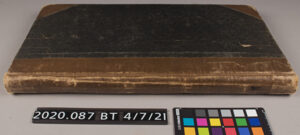
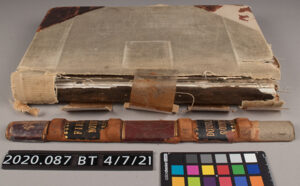
The Douglas County Field Notes ledgers before treatment.
Prior to treatment, the condition of the books was documented with digital images. The loose surface soiling was reduced from the outside of the books and within the text block.
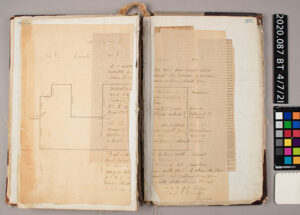
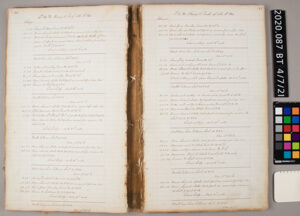
Loose notes (left) and broken binding (left and right) were consistent throughout both books.
Pressure-sensitive tapes had to be carefully removed from the book and notes to minimize the loss of original material. Some of the loose notes and maps were removed and placed in Mylar sleeves to ensure they can be safely handled in the future.
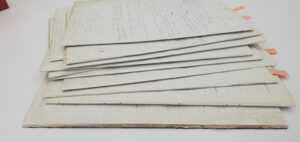
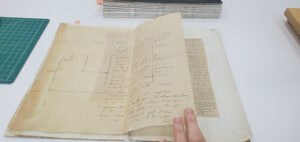
The text block sections had to be kept in order and each page examined for tears or losses.
The text blocks were removed from both books and each section was kept together and labeled. Thankfully, the pages were numbered so it was easy to keep them in order. Each page was carefully examined and all tears were repaired with Japanese paper.
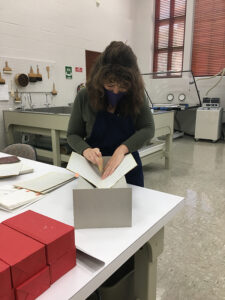
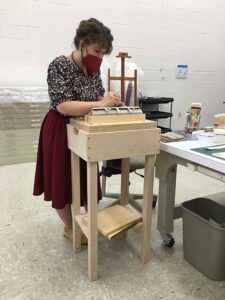
Hilary LeFevere punches new holes in a text block section for sewing (left) and preps the hinges on the spine (right) for reattaching the case.
Japanese paper guards were added to the outside of each section so that they could be resewn with linen thread. New spine linings were applied and the text blocks were refitted to the cases with linen hinges.
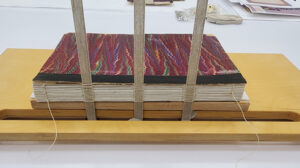

Hilary LeFevere sewed the text blocks back together and rebound them in their original cases.
The original spine pieces were applied and losses toned to match the surrounding materials. For one of the books, the original fly leaves were not reused. Fly leaves are the first and last pages of the book without text.
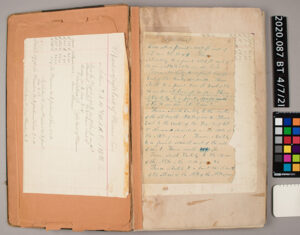

The tattered fly leaves of one of the books (left) were replaced with toned western paper to provide more support in the book.
The fly leaves in this book were very tattered with many paper losses. Additionally, these papers are very soft and would have easily torn or been damaged through use. New fly leaves were made from a heavy weight, western paper toned to the approximate orange color of the endsheets. The new fly leaves are much sturdier and will be less prone to damage.
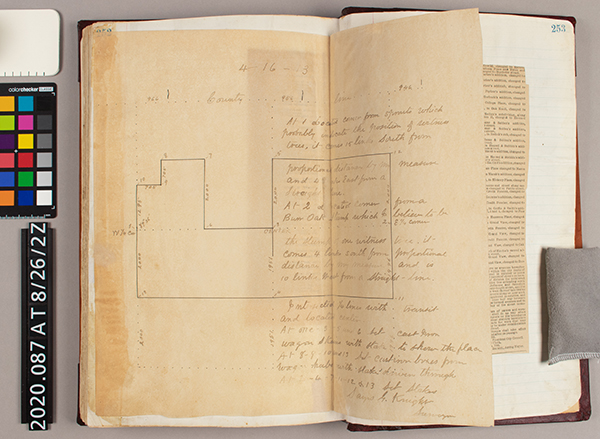
The binding of the books were resewn so they can be safely handled and read.
The books were housed in custom archival-quality boxes. The loose pages from the books that were not reattached to the textblock will be safely stored within the custom boxes.
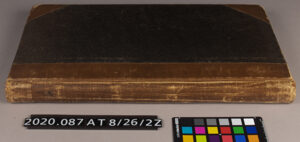
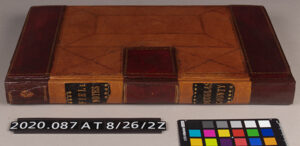
The Douglas County Field Notes ledgers after treatment. The book on the right had the failing cloth cover removed and the original leather cover restored. The cloth cover was cleaned and placed in a tray beneath the book within its new box.
The treatment of these historical books was a long process, but they are now structurally stable. They can be carefully used and read and are much better preserved for the future.



